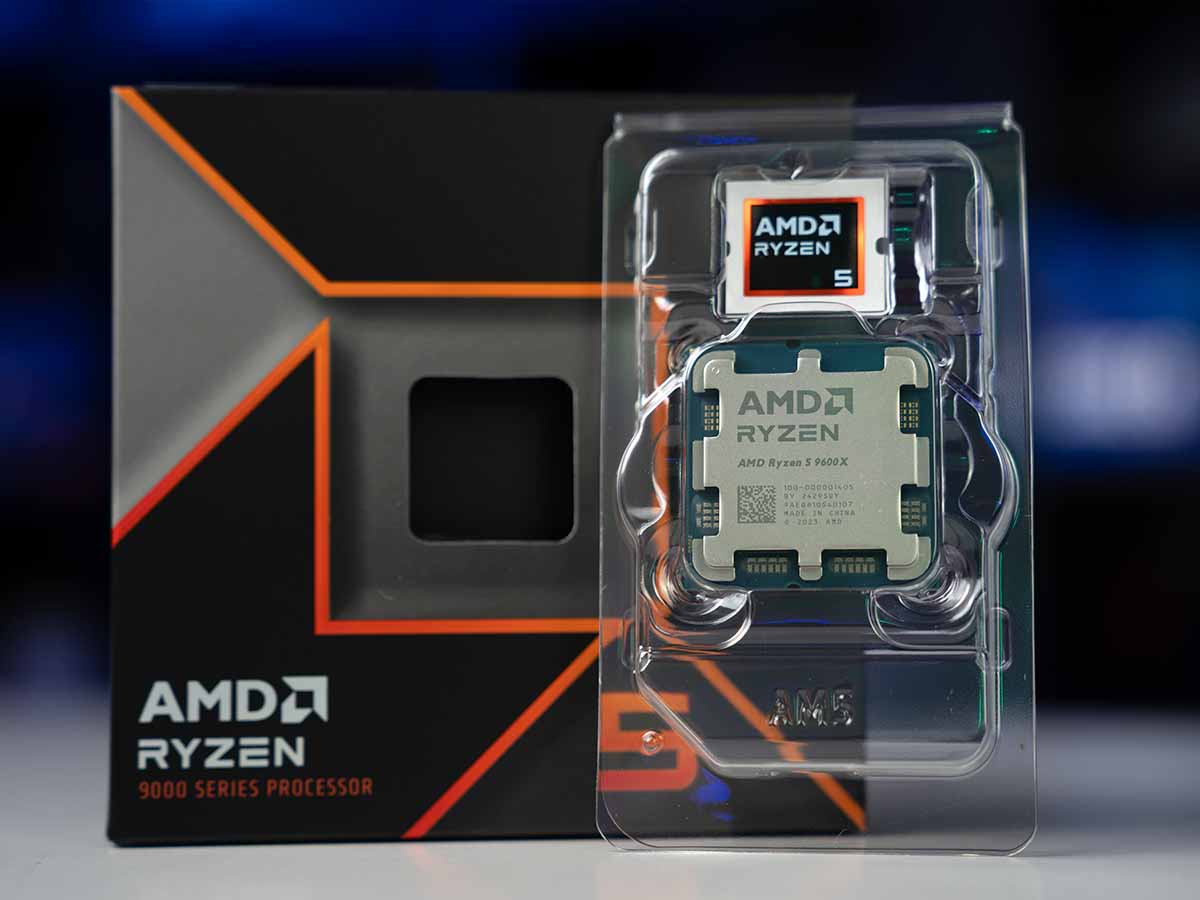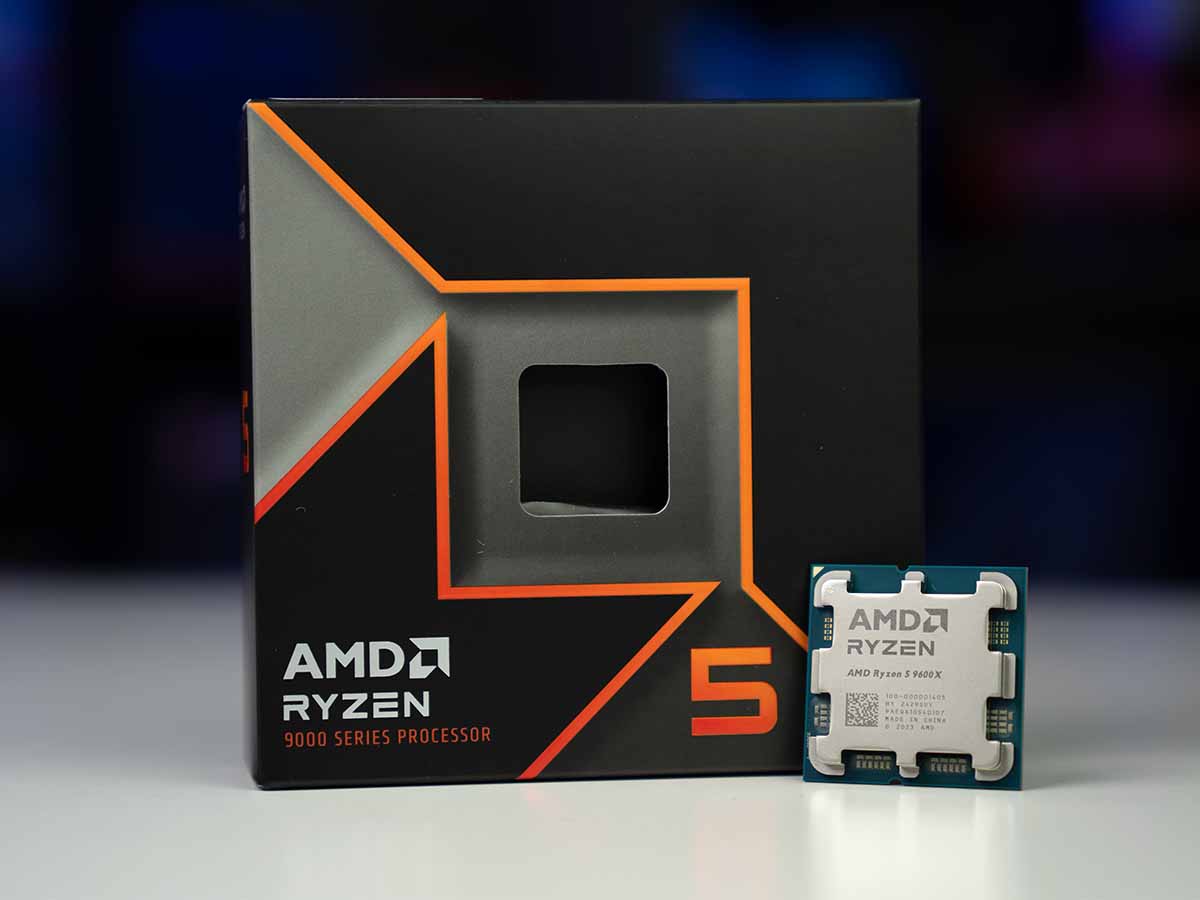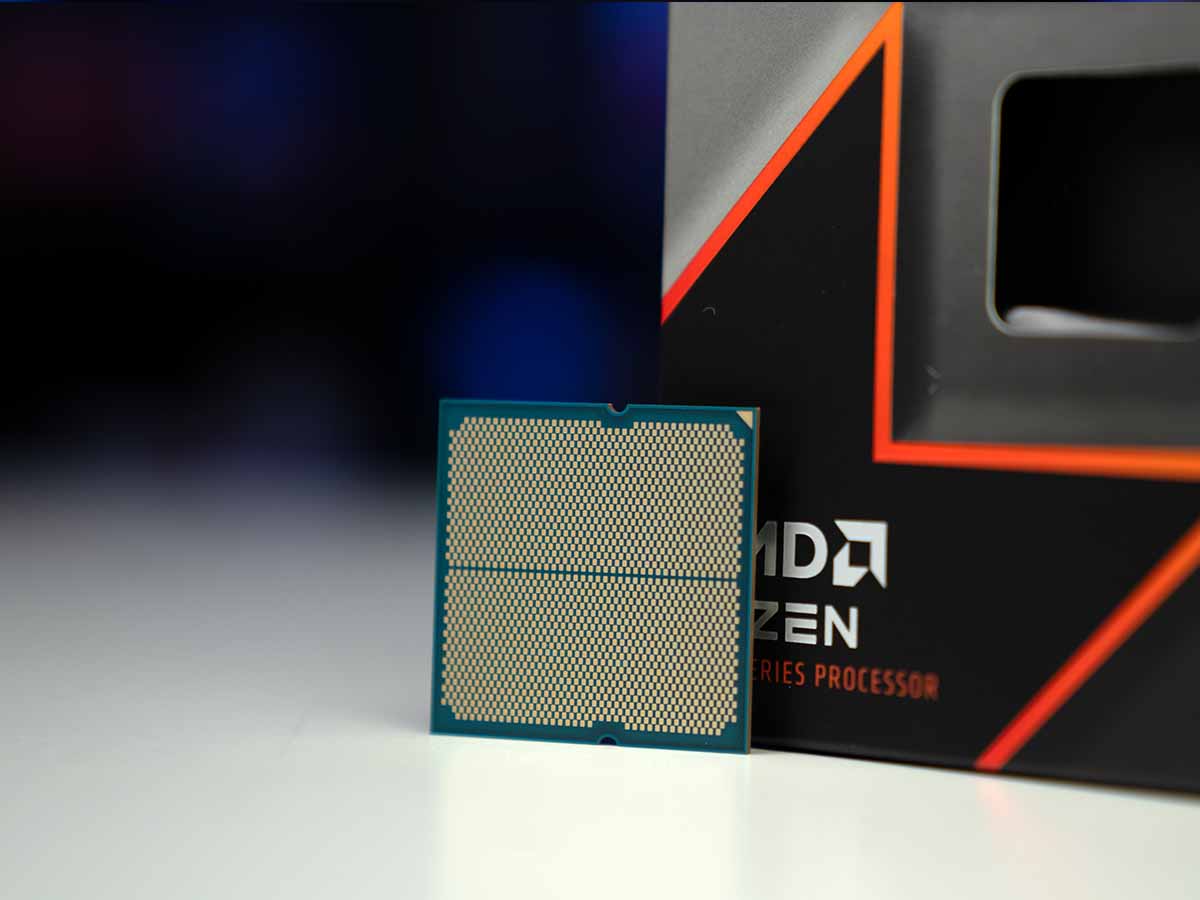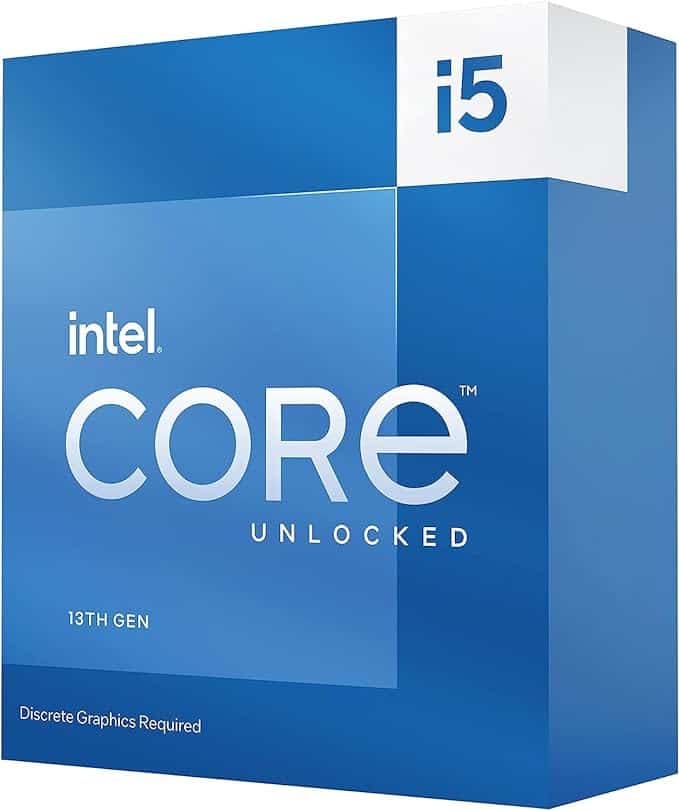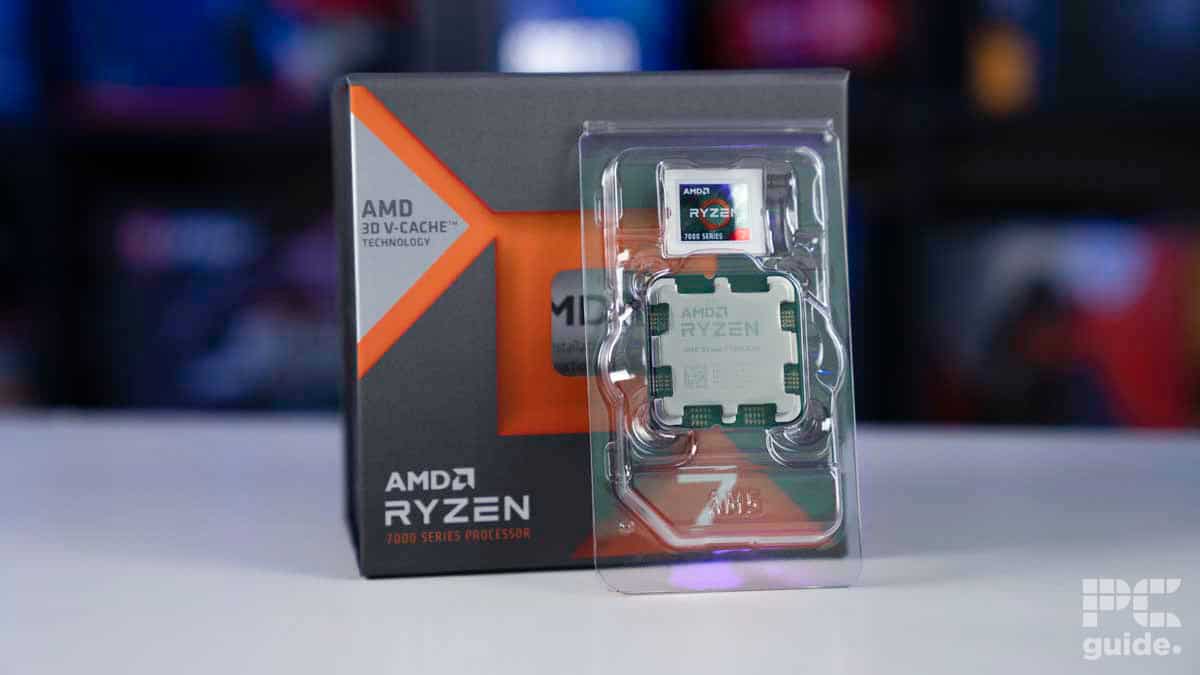Ryzen 5 9600X review – there’s much room for improvement

Table of Contents
AMD’s first wave of the 9000 brought 2 CPUs, the 9600X and the 9700X. We’re testing the Ryzen 5 9600X, the successor to the very popular 7600X, which we have also reviewed. This CPU is based on the band’s new Zen 5 core architecture, which promises IPC improvement of up to 16% over Zen4, according to AMD. f this is true we could see an even larger performance jump than we did going from Zen 3 to Zen 4, as that was around a 14% IPC improvement.
The 9600X falls into the same boat as the 9700X, which we reviewed recently, the CPUs are targeting efficiency over raw performance. Is that the right move for AMD at this point in time? With Intel on the back foot with the latest 14th-generation issues, this should be the time that AMD takes advantage. Will the 9600X reflect that attitude?
Prime Day is finally here! Find all the biggest tech and PC deals below.
- Sapphire 11348-03-20G Pulse AMD Radeon™ RX 9070 XT Was $779 Now $739
- AMD Ryzen 7 7800X3D 8-Core, 16-Thread Desktop Processor Was $449 Now $341
- ASUS RTX™ 5060 OC Edition Graphics Card Was $379 Now $339
- LG 77-Inch Class OLED evo AI 4K C5 Series Smart TV Was $3,696 Now $2,796
- Intel® Core™ i7-14700K New Gaming Desktop Was $320.99 Now $274
- Lexar 2TB NM1090 w/HeatSink SSD PCIe Gen5x4 NVMe M.2 Was $281.97 Now $214.98
- Apple Watch Series 10 GPS + Cellular 42mm case Smartwatch Was $499.99 Now $379.99
- ASUS ROG Strix G16 (2025) 16" FHD, RTX 5060 gaming laptop Was $1,499.99 Now $1,274.99
- Apple iPad mini (A17 Pro): Apple Intelligence Was $499.99 Now $379.99
*Prices and savings subject to change. Click through to get the current prices.
- Cores: 6
- Threads: 12
- Boost clock speed: 5.4 GHz
- Base clock speed: 3.9 GHz
- L3 Cache: 32 MB
- TDP: 65 W
- Platform: AMD Socket AM5
The 9600X does better intergenerationally than it’s bigger brother, the 9700X. With that being said, it’s about to receive a BIOS update that promises to increase it’s performance by a bit. So it’s sort of sat in a grey area right now, we think this CPU has the potential to be great, but we’ll have to wait and see what the upgrade brings.
- Good efficiency (will change with BIOS update)
- Fairly inexpensive
- Looming update will increase power draw
- Not massive gains over previous gen (will change after the update)
- Not much going for it
To put a long review short, we like the fact that you can save some money on power, especially if you live in a part of the world where electricity is expensive, but we just don’t think it’s enough of a talking point to get these CPUs sold.
Why we gave this CPU a 3.5
Simply put, you shouldn’t have to increase a CPUs power after it’s release because it didn’t perform how you expected it to. It does do better than the 9700X does intergenerationally speaking but its still very lacklustre to say the least. We will revisit once the performance update releases.
Specifications
Before we jump into the nitty-gritty of the 9600X performance, we have to outline what kinda cause this CPU is packing under the IHS. Doing so will help us better understand why it performs how it does. You can use this kind of thinking to help determine whether almost any CPU on the planet will be right for you.
- Cores: 6
- Threads: 12
- Base clock speed: 4.7GHz
- Boost clock speed: 5.3GHz
- L2 Cache: 6MB
- L3 Cache: 32MB
- TDP: 105W
- Socket: AM5
- iGPU: RDNA 2 based Radeon Graphics
As you can see, there are some things to unpack here, first and foremost being the efficiency of this chip. The 9600X has a 40W less TDP than its predecessor, the 7600X, and it has a much lower base speed, likely where it’s getting most of its power savings from. Most of the performance and some efficiency, however, come from the upgrade from Zen 4 cores to Zen 5.
We have the “soon to be 105W” statement because AMD is about to release a BIOS update that should put a little more pep in the step of some of the lower-end CPUs. However, this will increase the power consumption.
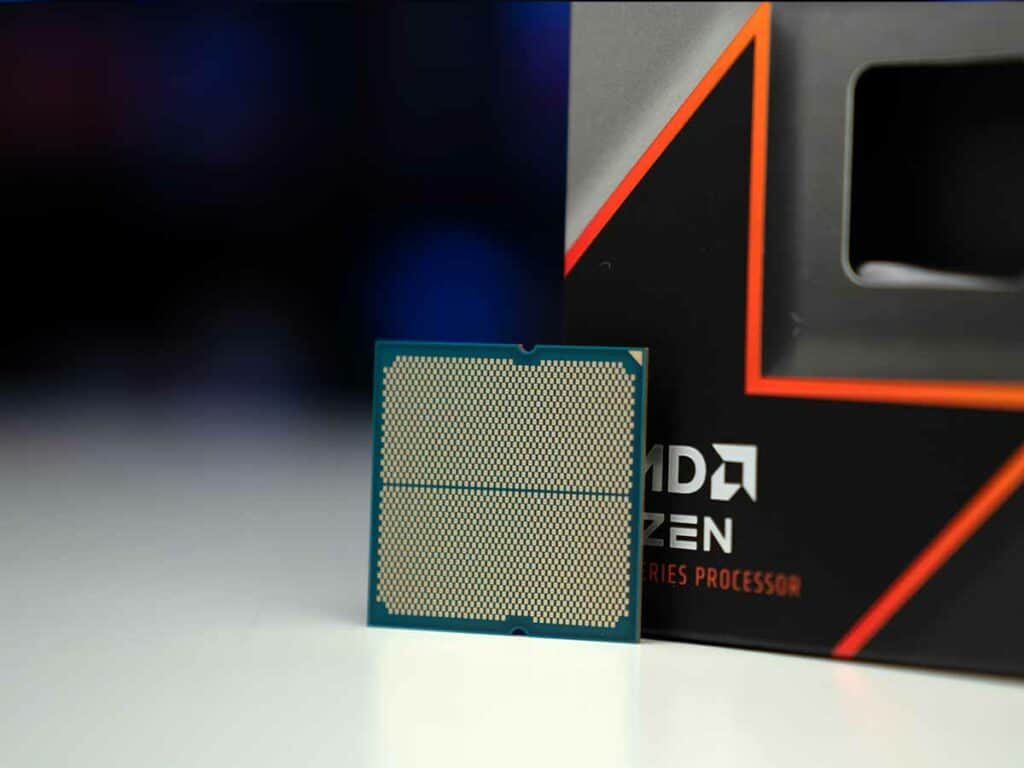
Zen 5 offers a 16% uplift in IPC (instructions per core) which improves performance. Zen 5 is built on the 4nm process architecture meaning the Ryzen 9000 series can hold far more transistors within the same footprint, again leading to better performance. But will the performance uplifts be enough considering the violent lack of juice these CPUs suffer from?
The reason we have outlined “soon to be 105W” in the TDP list, is because AMD is revising the power limits of the 9600X and 9700X CPUs. This follows complaints of the CPUs not living up to expectations, a bold move given that one of the main selling points was the efficiency.
Performance
Before we dive into how this CPU performs we should outline what we used to test this CPU, that way we can get a better understanding of why the 9600X performed the way it did. We opted to put more of an emphasis on productivity and synthetic tasks.
| Component | Name |
| GPU | RTX 4070 Ti Super |
| Memory | Corsair Vengeance DDR5 @ 6400MHz |
| Motherboard | ASUS ROG Crosshair Extreme X670 |
| CPU cooler | Corsair Elite LCD Capellix 360MM |
| Power supply | ASUS ROG Thor 1000W |
| Case | Cooler Master Masterframe |
As you can see, we spared no expense when picking parts for our 9000 series CPUs. These components must stay the same to create an “even playing field” for all the CPUs we test. Obviously we can’t test the same CPUs on the same motherboards every time, but we try to keep things as consistent across generations as we can. Or at the very least comparable.
We test all of our components in-house using our experts, if you want to know more about how we test these CPUs, then you can check out our page explaining how we do things. This is part of our PC Guide testing lab, and it helps to explain how we conduct all of our hardware testing, if you’re curious and want to learn more, head over there and take a look.
Synthetic performance
We tested the 9600X in a wide range of synthetic benchmarks, these help us to encompass the majority of workloads that people use their CPUs for. We also use popular synthetic benchmark suites that have a wide range of data available, so you can easily compare the results to a CPU that you have, or might also be interested in.
| Benchmark | Score |
| CPU Z Single | 827 points |
| CPU Z Multi | 6,435 points |
| Cinebench R23 Single | 2,149 points |
| Cinebench R23 Multi | 16,315 points |
| Geekbench Single | 3,283 points |
| Geekbench Multi | 14,909 points |
| Puget Systems photoshop | N/A |
| Blender render | Monster 99.88 SPM Junkshop 72.74 SPM Classroom 50.71SPM |
| 7 Zip Compression 32MB (10 passes) | 43.42s |
| Handbrake TOS 4K Fast 1080P encode | Average Speed 69.95FPS Encode Time 04:13 |
Okay so, first of all, we need to establish that Puget System’s benchmark refused to run for us on any of the 9000 series CPUs from AMD. Not sure why this is the case but it is, so we unfortunately don’t have any Puget data to work with.
Other than that, the Ryzen 5 seems to be able to pull its weight and does okay for the most part considering it only pulls a 65W TDP. When it stands alone, the results look admirable, but when placed against its predecessor, the 7600X, the results tell a different story.
| Benchmark | 9600X Score | 7600X Score |
|---|---|---|
| CPU Z Single | 827 points | 766 points |
| CPU Z Multi | 6,435 points | 6,192 points |
| Cinebench R23 Single | 2,149 points | 1,923 points |
| Cinebench R23 Multi | 16,315 points | 13,729 points |
| Geekbench Single | 3,283 points | 2,955 points |
| Geekbench Multi | 14,909 points | 13,236 points |
| Puget Systems photoshop | N/A | 8,131 points |
| Blender render | Monster 99.88 SPM Junkshop 72.74 SPM Classroom 50.71SPM | Monster 87.03 SPM Junkshop 62.23 SPM Classroom 45.64 SPM |
| 7 Zip Compression 32MB (10 passes) | 43.42s | 45.531s |
| Handbrake TOS 4K Fast 1080P encode | Average Speed 69.95FPS Encode Time 04:13 | Average Speed 61.49 FPS Encode Time 4:49 |
We will say at least there is a little more of a performance lead than we saw with the 9700X vs 7700X. The 7600X can stay relevant in certain workloads but the 9600X pulls ahead in all the workloads we tested, even if it was by a margin of a couple of seconds, or a few points in some cases. Better than we can say for the 9700X.
Where the 9600X shines over its predecessor is the single-core performance, if we take CPU-Z, Cinebench, and Geekbench, for example, we can see that the 9600X dominates, with scores of 827, 2,149, and 3,283 points respectively. Looking pretty good stacked up against the 7600X’s 766, 6,192, and 2,955. This single-core performance uptick comes primarily from the new Zen 5 cores inside the 9000 series.

The 9000 series contains new Zen 5 cores that are packed full of more transistors than Zen 4, that’s because Zen 5 is built on the 4nm process, and Zen 4 on the 5nm process. Making the transistors in the 7000 series larger resulting in fewer of them.
We also cannot disregard the fact that the 9600X consumes a whole 40W less power than the 7600X, making it the far more efficient choice. Even a small uplift in performance is made more impressive when you factor in the power efficiency. We know that AMD plans to even the playing field when it comes to efficiency, and that’s fine, we will revisit these benchmarks when it does so. For now, the results were based on a 65W TDP, so we’re running with that.
Real-world results
Just for fun, we threw in some real-world gaming benchmarks. Joking, it’s never just for fun, real-world benchmarks aren’t just an excuse to play games at work. Gaming benchmarks represent the CPU’s ability to handle workloads on the fly, rather than the cushy controlled environment of the synthetic benchmark. The thing with real-world benchmarks is that they are not 100% repeatable as each time will yield a slightly different result.
| Game | 9600X | 7600X | 5800X3D |
|---|---|---|---|
| Cyberpunk 2077 | 325 FPS 1% 208 FPS | 295 FPS 1% 149 FPS | 279 FPS 1% 157 FPS |
| Day’s Gone | 246 FPS 1% 140 FPS | 236 FPS 1% 62 FPS | 283 FPS 1% 144 FPS |
As you can see here, the 9600X did pretty well against the 7600X, particularly in the 1% lows category. At the risk of sounding like a broken record, the gains are much better than those of the 9700X over their 7700X.
In Cyberpunk, we use the built-in benchmark tool, as the render is happening in real-time, it’s the most stable version of gaming benchmarks that we have, and man does the 9600X do well against the other CPUs in the lineup. It does perform the same as the 9700X in this case, but that’s because they are the same cores at similar speeds, so of course they are going to be at least similar. Where the 9600X and the 9000 series in general shine is stability, the 1% lows are always much better than the previous generation.
In Day’s Gone, which is a more unstable test in the sense that it isn’t as repeatable, we see the 9600X beat out the 7600X, but not the gaming beat that is the 5800X3D. This is to be expected, as the power of X3D is just hard to contend with, even when it’s 2 generations behind.
All in all the 9600X held up well, but I can’t wait to see just how good it is when the 105W BIOS update drops.
What do these benchmarks mean?
Our approach is to cover as many CPU use cases as we can imagine. These tasks range from video editing and compression to encoding and more. We believe it's crucial to cast the widest net possible because people use their CPUs in all sorts of ways.
Synthetic benchmarks are very predictable and happen in a controlled environment with very little variance. These tests are perfect for assessing stability and simulation workload performance, these tasks represent the more ‘data-oriented’ workloads. These workloads include things like simulation, video encoding, compression, and more.

On the flip side, real-world benchmarks are designed to test a CPU's ability to handle unpredictable situations. Gaming is a prime example of this. Unlike synthetic benchmarks, where tests are fully repeatable and controlled, gaming workloads are unscripted. They unfold in real-time, making them less predictable and harder to manage. However, this unpredictability provides a clearer picture of a CPU's real-world stability. When assessing system stability or identifying bottlenecks, real-world tests are essential.
In essence, if a CPU performs well in synthetic benchmarks, it's likely a strong candidate for productivity and workstation tasks. On the other hand, if it shines in gaming tests, then it's probably great for gaming.
Price
The Ryzen 5 9600X can be found for around $279, which isn’t a massive amount of money, but is it worth it for the minimal increase in multi-core performance that the 9600X brings over the 7600X? It may be better than the 9700X’s increase over the 7700X, but we’re inclined to suggest waiting until the 9600X receives the new BIOS update to make a decision.
Alternatives to the 9600X
Here we offer some alternatives to the Ryzen 5 9600X, just in case it doesn’t strike you as something you’d be interested in. You could opt for the not-so-much-worse 7600X, or opt for Team Blues equivalent. Just know that you’d have to change the motherboard if you wanted to go for an Intel CPU.
-
AMD Ryzen 5 7600X
- Cores: 6
- Threads : 12
- Boost clock speed: 5.3 GHz
- Base clock speed: 4.7 GHz
- L3 Cache: 32 MB
- TDP: 105W
-
Intel Core i5 14600K
- Cores: 14 (6P-8E)
- Threads: 20
- Boost clock speed: P-Core 5.3GHz / E-Core 4.0GHz
- Base clock speed: P-Core 2.6GHz / E-Core 3.5GHz
- L3 Cache : 24 MB
- TDP : 125W
-
AMD Ryzen 7 7800X3D
- Cores: 8
- Threads: 16
- Boost speed : up to 5 GHz
- Base speed: 4.2 GHz
- L3 Cache: 96 MB
- TDP: 120 W
Conclusion
The Ryzen 5 9600X does do much better than its bigger brother at fending off the previous generation, but with a new BIOS update looming, it’s safe to say we’re going to see that gap increase further. While this CPU offers plenty of efficiency over the last gen, that’s about to be thrown out of the window by this new update, so we’d suggest staying away from the update if power efficiency is of concern to you.
- Cores: 6
- Threads: 12
- Boost clock speed: 5.4 GHz
- Base clock speed: 3.9 GHz
- L3 Cache: 32 MB
- TDP: 65 W
- Platform: AMD Socket AM5
The 9600X does better intergenerationally than it’s bigger brother, the 9700X. With that being said, it’s about to receive a BIOS update that promises to increase it’s performance by a bit. So it’s sort of sat in a grey area right now, we think this CPU has the potential to be great, but we’ll have to wait and see what the upgrade brings.
- Good efficiency (will change with BIOS update)
- Fairly inexpensive
- Looming update will increase power draw
- Not massive gains over previous gen (will change after the update)
- Not much going for it
The gaming performance is very stable and there is a substantial improvement over the last gen. But with that being said, if you don’t play games that’s not going to mean much to you. The shineth benchmarks show that this CPU is good at multi-core workloads, well, more so than the 9700X is anyway, speaking intergenerationally. We can’t wholeheartedly recommend this CPU just yet, not until the price has dropped or the performance has improved, and both will likely happen soon. This CPU could go from the a maybe to one of the best-value CPUs on the market with two simple moves, so it’s down to AMD now.



